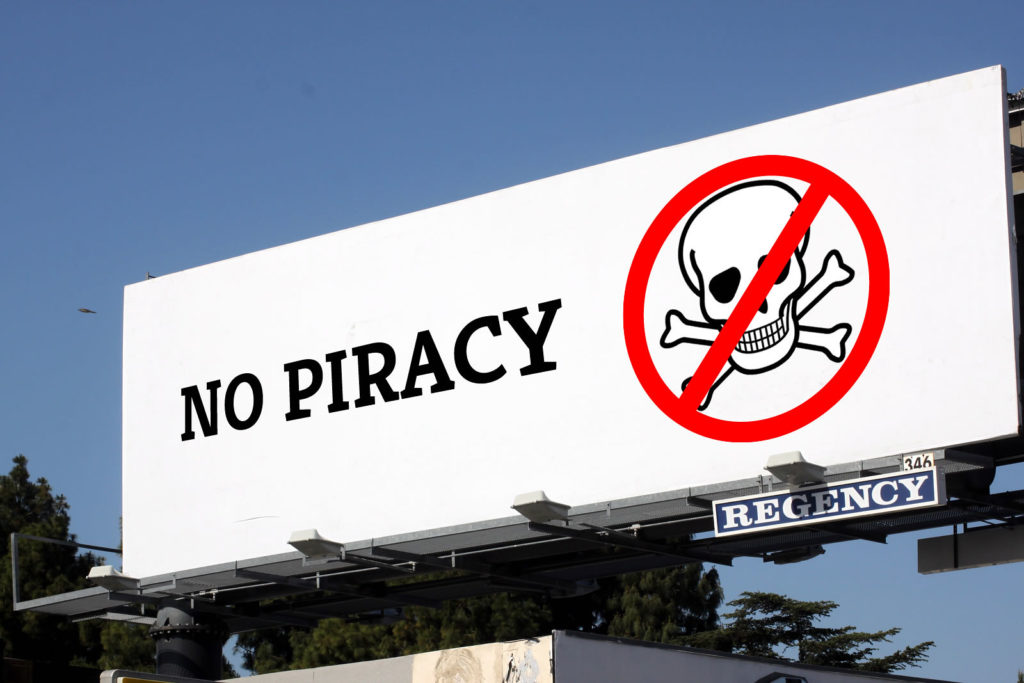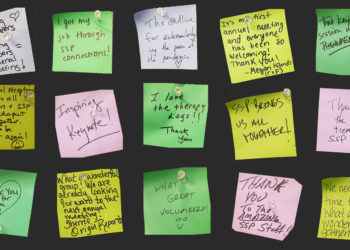Way back in 2010, I wrote a post about internet startups driving usage and building a userbase through the infringing distribution of copyrighted material.
Building a network based on filesharing is a quick way to gain a large population of users. People like getting things for free. The legal issues surrounding the redistribution of copyrighted material are often ignored during the network building process — the focus is on providing functionality for the user. But when the network is ready to move up to the big leagues, to start partnering with and generating revenue from deep-pocketed companies and institutions, a lack of adherence to copyright law can be a major barrier to success.
It has remained an effective route to building high levels of traffic, but as I wrote in the post, there comes a time when even the best-funded startup has to begin to think about becoming an actual business that can turn an actual profit. To do so, one must turn away from the questionable activities that have to date been at the core of one’s activities, and instead start to become a legitimate part of the larger community in which one exists. The older post looked at two companies, Scribd and Mendeley, which eventually took different routes to becoming respectable citizens (the former through partnering with the IP-holders it used to pirate, the other was bought out by a publisher).

All of this came to mind last month at the Society for Scholarly Publishing’s Annual Meeting, during a session where publishers from Rockefeller University Press (RUP) and Hindawi discussed the results of their trial partnerships with ResearchGate, once the scourge of the scholarly seas, and now increasingly a distribution channel that is being folded into more and more organizations (The Royal Society being the latest) The results from these experiments were interesting — traffic to versions of papers hosted by ResearchGate was significant, but still relatively small as compared to traffic to the same papers on the publishers’ own sites. Something really striking about that traffic though, was that it came from different geographic regions and demographic groups than those that reached the same content directly in the journals. Further investigation of this phenomenon is warranted — is this just a matter of SEO differences among different search tools used by different readers, are these users starting their discovery journey on ResearchGate, or is something else coming into play?
One caveat to all this is that the publishers presenting results only trialed materials that were already available in an open access (OA) manner. Neither has licensed any subscription-access-only content to ResearchGate. Hindawi only publishes OA journals, and RUP makes all articles OA after 6 months (and these were the only types of articles included in their trial). Other publishers, however, are working on gated content with ResearchGate, which is now willing to enforce subscription access restrictions on its users. Scribd created BookID to pre-emptively block the distribution of copyrighted materials, and at the panel, ResearchGate founder Ijad Madisch suggested a willingness to examine GetFTR as a way to readily allocate appropriate user permissions regarding subscription access. Publishers also benefit from ResearchGate usage data, which ideally can be added to COUNTER statistics to inform libraries of their patrons’ activities.
All of which marks an ongoing shift from ResearchGate’s earlier days, where a refusal to pre-filter any uploaded material brought the ire of many major publishers and resulted in a lawsuit that, while still being appealed, placed responsibility on ResearchGate for the materials uploaded to its platform. It’s difficult to tell whether the lawsuit was the most important factor in this shift, as changes in the EU Copyright Directive, making platforms much more responsible for the materials they host, is likely a significant driver of the strategic changes for ResearchGate. It’s probably a combination of these two, along with the lifecycle of a business discussed in the earlier post, where maturation requires some level of integration into the broader community.
Like Scribd before it, ResearchGate has chosen the partnership route (although a Mendeley-like buyout remains a possibility). As the world of journal publishing continues its evolution toward OA, where the reader obtains a copy of the paper is becoming less relevant to a publisher’s bottom line, at least under current models where one gets paid by the author upon publication and sees no further revenue beyond that point. The shift for ResearchGate toward enforcing subscription access rights may not be an easy one. If, as many have suggested, the primary user benefit of ResearchGate was the free provision of such materials, then eliminating that value for users may drive them elsewhere (a relatively easy shift in a world where Sci-Hub continues to exist).
Roger Schonfeld has written about the idea of a “supercontinent,” one place where all scholarly papers can be found, and these ongoing partnerships, combined with its enormous userbase, makes ResearchGate a key contender in that arena. They will face stiff competition, as Elsevier has recently begun its own first round of partnerships, bringing materials to the ScienceDirect platform in a similar manner.
Over time ResearchGate has shifted in its the business model, and now appears to be taking a multi-pronged approach. Their initial model, advertisement sales, remains in place, and although they offer strong traffic levels to a broad audience of scientists, the low prices paid for digital ads and the relatively small size of the scientific community in total suggests it may not provide enough revenue on its own to recognize investor expectations. Recruitment advertising is the next revenue stream, a good fit for ResearchGate, and given the ongoing flight of mid-career researchers and postdocs from academia, focusing on corporate recruiting seems a promising path.
At the heart of both of these models is the enormous userbase that ResearchGate has accumulated, but further business models are where publishing industry citizenship and partnering come into play. ResearchGate is now offering a variety of Publisher Solutions, ranging from content hosting to syndication to marketing. The journals platform hosting market could use more competition, but it remains a difficult business, as indicated by the relatively low price paid for the purchase of the largest such company, Atypon.
Syndication is proving itself as a means to expand the audience for research articles, but in a fully-OA world, is this something that publishers will be willing to pay for? If all of your articles are CC BY-licensed and your only income from them comes from author fees, is there enough ROI to invest significantly in post-publication activities to drive readership? It’s not clear if any of the publishers currently undergoing syndication trials with ResearchGate are paying for those activities. Author recruitment, however, is essential in that fully-OA world, so marketing services seems a surer bet, although again limited by the overall size of the market.
The Elsevier competition should also be of concern. Elsevier does not need to profit from distribution of articles, and can instead potentially run its supercontinent as a loss leader, serving as a data-gathering mechanism for its analytics businesses. If this proves successful, perhaps there is an opportunity for ResearchGate to serve that same role, as a researcher surveillance data source for Elsevier’s competitors.
And so it is perhaps unsurprising to see that as ResearchGate continues to evolve, it is now following the same digital playbook as many before it. The initial build phase of its network may now be at an end, and the company is shifting its attention to partnerships as it reaches the next level of market maturity.
Discussion
6 Thoughts on "Going Legit Part 2: The Continuing Path from Piracy to Partnership"
Referring to scholars sharing their own work in a closed network of their peers as ‘piracy’ is a disingenuous reading. Unsurprising, still disgusting.
Referring to ResearchGate as an example of scholars simply “sharing their own work within a closed network” is an overly ingenuous reading of what ResearchGate is and does. ResearchGate is not a closed network (anyone can access it, and much of the work shared on that network is freely, publicly, and illegally available), and the phrase “their own work” is tendentious and misleading in this context. Much of the work shared on ResearchGate by authors represents “their” work in the sense that they produced it, but it is not “theirs” in the sense of them having the rights to redistribute it freely. When authors (or anyone else) freely shares work in which someone else is the copyright holder, “piracy” is a perfectly accurate and legitimate term for that behavior.
the legal scuffle between publishers and RG is one of those things that i’ll never fully grasp i think. publishers going after RG for facilitating piracy makes sense, completely understandable, nothing wrong with that of course. what doesn’t make sense is going after the facilitator while giving the perpetrators a free pass, never holding them accountable.
naturally publishers would be shooting themselves in the foot by doing that, so of course they don’t do that. chasing after their own creators who bartered the content off to them (and then pirated it via RG) would obviously be a bad idea for a business that depends on donated content. yet they somehow manage to convince the court that RG should be responsible for policing publishers’ content creators.
while at the same time publishers policing their content creators essentially consists of an author signing a form or ticking a checkbox at time of submission saying yes this is all my original content i swear don’t worry everything is fine. and that’s it. job done. basically in the same manner RG has been doing it. taking the author’s word that there’s nothing infringing in the paper.
it’s very confusing, doesn’t make sense, and i’ll be forever grateful to anyone who manages to wrap my head around this.
I think part of the explanation is a simple matter of scale. Going after the perpetrators would mean taking action against hundreds of thousands of individuals. Going after RG means going after a single entity.
yeah i understand how that’s easier and more convenient for publishers, but it’s like going after online maketplaces for offering stolen/counterfeit goods while letting the actual sellers of that stuff off the hook. how does that make any sense?
and i mean it doesn’t even have to be legal action — publishers could easily ban offending authors and refuse them future service. but that never happens. there’s no disciplinary action whatsoever taken against the pirates. on the contrary, they’re welcomed back with open arms, enabling further piracy.
but they happily sue RG or any other sharing service that pops up for not policing the pirates?
still ridiculous and still doesn’t make sense.
But the “pirates” were policed. Publishers continue to go after the individual infringers through takedown notices. Lawsuits are probably not appropriate responses in those cases for many reasons, as noted the costs and efforts involved in each individual lawsuit makes this un-accomplishable. But also the lessons of the RIAA and the music industry suggest that suing one’s own customers is a bad business practice.
If you go back to the launch of this lawsuit, Robert Harington offered a good blog post that discusses the motivations behind it:
https://scholarlykitchen.sspnet.org/2017/10/06/researchgate-publishers-take-formal-steps-force-copyright-compliance/
In short, this came about after years of attempted negotiation, and the lawsuit addressed more factors than just the copyright infringement involved in hosting the articles (e.g., RG creating derivative works by stripping out branding and metadata and changing links within paper reference lists to point to RG versions of articles rather than the originals). Where a company can claim a safe harbor defense and abdicate responsibility for what is available on its platform (or at least a company could before the EU changed its copyright directives), it cannot actively encourage infringement among its users, another point raised in the suit.
One further point to consider — researchers uploading their papers were not doing so in order to profit financially, whereas RG remains a for-profit company. Hence, there may be different approaches necessary, and a lawsuit to recoup funds may not be appropriate for some of the parties involved.
Regardless, given RG’s shift in strategy, the tactic (along with the other market factors mentioned above), seems to have been successful.


